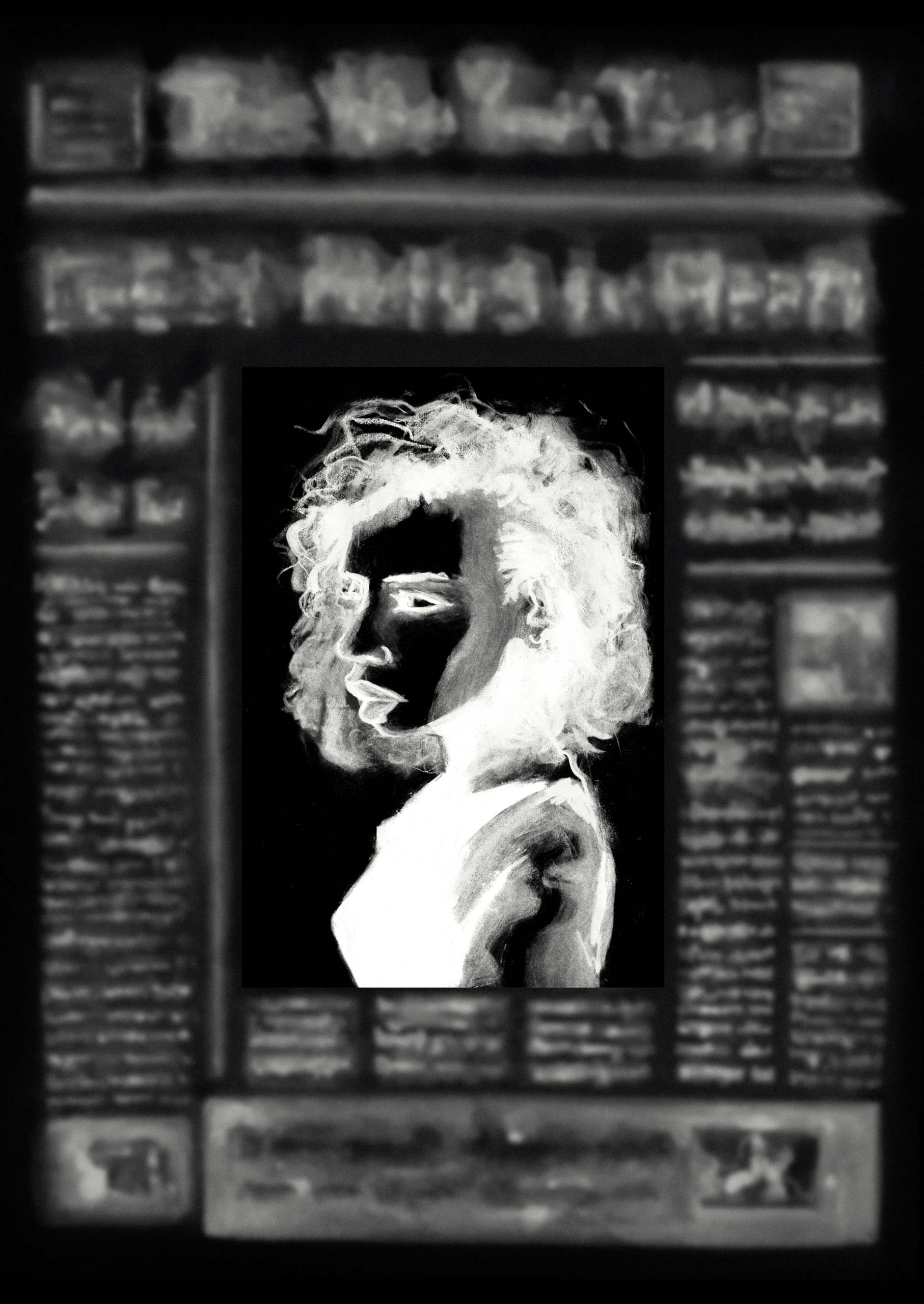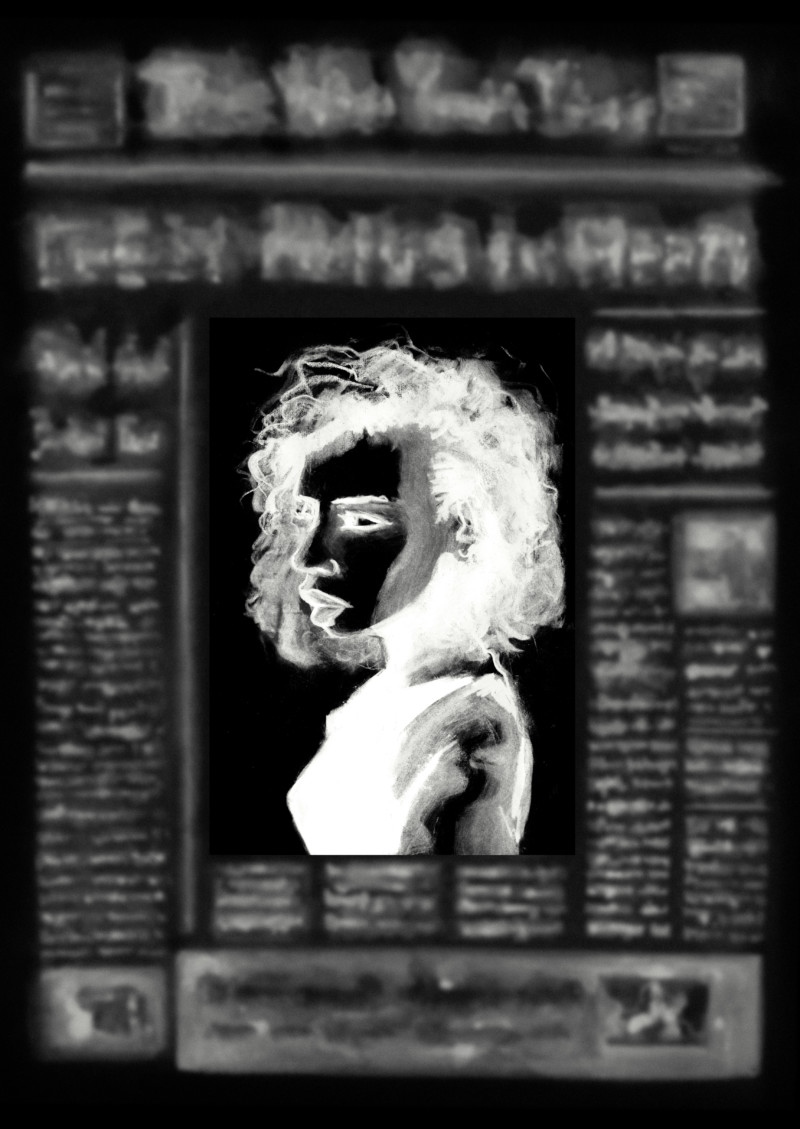A few weeks before Thanksgiving in 2015, a group of students at the University of Missouri began occupying a large quad on the school’s campus. The students, who called themselves “Concerned Student 1950,” referring to the first time black students were admitted to the university, were protesting what they viewed as an administration that consistently ignored complaints of on-campus racism. By the time I got there to cover the protests for Fusion (now called Splinter), I was greeted by a maze of tents atop different-colored tarps, and signs around the perimeter of the encampment that read “No Media.”
After some minutes of observing the camp and strategizing about the best way to approach the students congregated just 10 feet from me, I paused and looked around. There were a few other reporters doing the same thing. One was a man in a suit, his hair perfectly coiffed, holding a TV mic with a local station’s logo. Another was an older man in all black with a reporter’s notebook and pen, classic for a print reporter. And there was one more guy with headphones and a recorder, who looked like a radio reporter. All of these people were very much like me: journalists in a jam, trying to figure out how to get to the story, from which, at present, we were being shut out. But they were different from me, too, in one major way: All of them were white men.
ICYMI: The most difficult place in America to practice journalism
I knew I had a better chance than the other reporters of getting the students—most of whom were of color—to talk to me. I am black, and looked younger than 30, which is the age I was at the time. I made a calculation: I would see if the group wanted to talk, and let them know I’d wait as long as I had to. I would tell them, as proof of my diligence, that I had nowhere to go and would take up residence alongside them.
I identified myself as a reporter, and said I didn’t want to disrespect their media-free zone but wanted to hear their perspective and their stories. The students’ faces lit up, and one said, “You’re the first reporter to say that.” It took about 30 more seconds for them to escort me onto the grass and introduce me to the group’s leaders.
It is paramount to our work as journalists that we understand one fundamental thing about reporting on race: Our identities as reporters matter. That’s particularly important now, as race and racism, which have always been a part of American politics, have been catapulted to the very center of the national discussion under Trump. When I walk into a housing project in the South Bronx, I am perceived differently from a white reporter. That should not preclude a white reporter from doing a story in the South Bronx, but to write or report on race is to understand that it begins with comprehending how we fit into the stories; it is to understand the way we are perceived; it is to understand the way we have been taught to perceive others. All of that informs the questions we ask, the information we seek, the statistics we interpret. And as reporters we must constantly remind ourselves of this sobering fact: We are not immune to the facts of race and racism in America just because we are delivering the news.
My race, age, and gender helped me gain access to the group of college students at the University of Missouri. But being of color in the field doesn’t always work out that way, especially since racial violence and animus have been heightened under Donald Trump. In August, Ilia Calderón, a news anchor with Univision, interviewed a white supremacist in his home in North Carolina. The Ku Klux Klan leader, Christopher Barker, was expecting a fairer-skinned reporter for the interview, not Calderón, who is a black Colombian. In the interview Barker called Calderón a “nigger” and threatened her life.
ICYMI: You might’ve seen the Times‘s Weinstein story. But did you miss the bombshell published yesterday?
That same month, a widely shared and lauded Vice News documentary followed its reporter, Elle Reeve, as she interviewed white supremacists during the weekend of the Charlottesville “Unite the Right” rally in August. Reeve, unlike Calderón, did not have to worry about being a journalist of color, and did not have her life threatened because of the way she looked. I believe that Reeve being white and blonde made it easier for Cantwell to speak freely. It was, of course, not the only factor. It helped, too, that Reeve has been reporting on white supremacists and knew the right questions to ask, but her race certainly played a role in her interactions with Cantwell. Other journalists and writers of color who have interviewed white supremacists are not able to erase their race from these interviews. Al Letson from Reveal and comedian W. Kamau Bell could not avoid the fact of their blackness when they (separately) interviewed white supremacist and ethnonationalist Richard Spencer.
Not only do our racial identities as reporters matter, but so does our understanding of how race functions in the United States. It is everywhere, and in everything. It is in what we eat, it is with whom we eat, and it is in what we talk about while we’re eating. It’s where we live and whom we live with. It is in the absence of living around those who are of a different race, and it is living in close proximity to those who are of a different race. It’s in the conversations we have, or don’t have, with our neighbors, our parents, our friends. Race is as much a part of our lives as breathing, and its consideration must be integral to our reporting.
Race is as much a part of our lives as breathing, and its consideration must be integral to our reporting.
In a recent essay for The Atlantic, Ta-Nehisi Coates writes that Trump’s presidency “is pawned off as a product of the white working class as opposed to a product of an entire whiteness that includes the very authors doing the pawning.” It is a cop-out to claim that the white working class is the reason for Trump’s ascendancy, Coates argues. And he’s right. Journalists failed to see that Trump represents much more than the white working class, and we got that story wrong. Coates goes on to assert that racism is “at the heart of this country’s political life.” If we, as reporters, understand that fact, then mistakes like the one we made covering Trump’s rise to power will be rectified.
If you are reporting on this administration, you can bet there is a race angle. Sometimes, it’s obvious, like when Trump said there are two sides to the violence that occurred in Charlottesville. Then there are times when it’s present but less apparent, like when Attorney General Jeff Sessions announced the end to DACA protection for immigrants who came to America as children and said it “contributed to a surge of unaccompanied minors on the southern border.” That isn’t true, and it’s important to interrogate why Sessions said that. To deny its racial background is to miss a part of why Sessions’s statement was newsworthy.
TRENDING: What my 18 months as Jared Kushner’s first editor taught me about the Trump family
As reporters, it is important to include and consider race in all of our stories. Let’s say you are writing a story about a cat that was rescued by a fireman. What town is this? What does the town look like? Whose cat was it? How many cats were saved in this town in the last year? Have most cat rescues occurred in affluent parts of this town? Who lives in that affluent part of town? Is there a single person of color in this town? If so, how do cat rescues in this town compare to those in an all-black or all-Latinx town down the road? We must seek out the parts of stories that are not obvious in order to find the truth.
To write smartly and critically on race, you must read. Read books about America’s history that are not the books you read in high school. Read the work of your peers who write on race. To get sources to open up to you, sources who have been traumatized by a country that has called them “alien” or “lazy,” convey to them that you are trying your best to tell their stories honestly and compassionately. To do that accurately, you need to study America’s history.
Sometimes getting the right source to open up takes time. If you’re writing for a digital outlet that expects a quick turnaround, push back on your editors. Tell your editors the story requires trust building, and that it will be better for the extra time.
Rhetoric is powerful. In 2008, it was used as a force of optimistic “hope and change.” Now it has taken a dark turn. The language used by Trump is emboldening white nationalists and strengthening what used to be a white supremacist fringe. As journalists, it is imperative that we poke holes in that rhetoric, which can be found in everything we report on. Race and racism are everywhere, and in everything. We are the product of a violent history that privileges one race over all others. And in order to tell that truth, we must look for it everywhere.
Collier Meyerson is a reporter with The Nation, where she covers race and politics, and an investigative fellow at Reveal. She received an Emmy for her work on MSNBC’s All In with Chris Hayes and won the National Association of Black Journalists’ 2016 award for online commentary.



